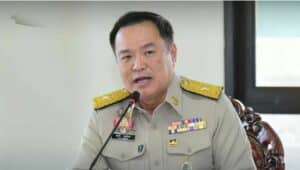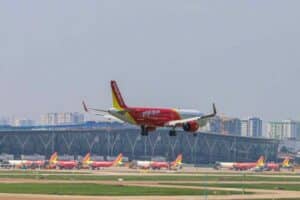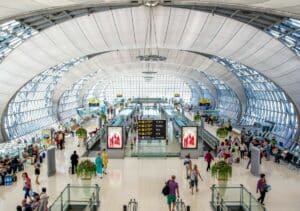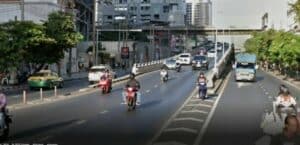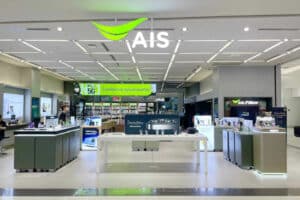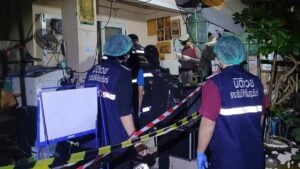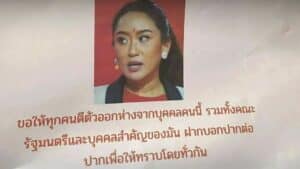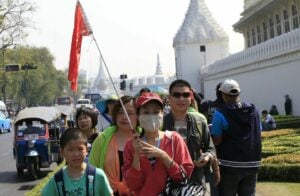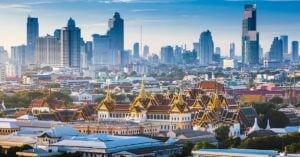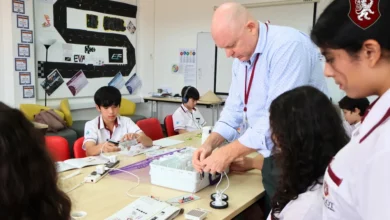What are the common international school curriculums in Thailand?

Thailand boasts an impressive array of top-notch international schools, leaving many parents in a bit of a pickle when it comes to picking the perfect one for their little cherubs. Aside from location, languages, and costs, you also need to consider the curriculum that fits the learning needs of your child. The wide range of international schools’ curriculums — with their tongue-twisting acronyms — can be confusing. To help you out, we’ve compiled the international school curriculums on offer in Thailand below.
Common international school curriculums in Thailand
The curriculum options available in international schools frequently reflect the national identity of the school. There are three common international school curriculums in Thailand: American, English National (British), and International Baccalaureate (IB). International schools may provide hybrid choices that combine many types of curricula.
American (US.) Curriculum

Choosing the American curriculum might make sense for US expats living in Thailand with children already in the American education system. It’s also an excellent choice if you want to send your children to prestigious American or international universities or if you plan to move back to the US. Children are more receptive to a familiar educational approach. Although each US state’s educational requirements vary slightly, some similar concepts and techniques, such as inquiry-based learning and student-centred planning.
The American or US Curriculum in Thailand is based on American Common Core State Standards for English, Language Arts, Maths, History & Geography, and Next-Generation Science. It gives students more creative freedom to tailor the curriculum based on their specific needs. International schools that follow this US-style curriculum admit children between the ages of 5 and 18. The curriculum is usually divided into 4 stages: preschool or kindergarten (ages 5 or below), elementary (first to sixth grade; ages 6 – 11 or 7 -12), middle or junior high (seventh to eighth grade; ages 12 – 13 or 13- 14), and senior high (ninth to twelfth grade; ages 14-17 or 15 – 18).
Students need to take either the SAT or ACT exam during their last years of high school to get accepted into a US university. Students from the American school system may also need to successfully complete three to five Advanced Placement (AP) tests with high scores in order to be accepted for admission to universities in other areas of the world.
Accreditation
International schools with an American curriculum in Thailand are usually accredited by one of four organisations, including the Middle States Association of Colleges and Schools (MSA), New England Association of Schools and Colleges (NEASC), Western Association of Schools and Colleges (WASC), and Cognia. This will increase the likelihood that graduates who pass college entrance exams like the SAT or ACT will be accepted into American colleges and universities and ensure that high school diplomas from these schools are recognised by those institutions.
Take a look at our picks of the best American Schools in Thailand.
British National Curriculum

One of the most popular international school curriculums in Thailand is the British curriculum. It’s usually the preferred choice among families who come from the United Kingdom or plan to move there in the future.
The National Curriculum is used in public schools in England, Wales, and Northern Ireland. On the other hand, private schools in the UK are free to choose their own curriculums. The National Curriculum framework, which culminates in students taking the General Certificate of Secondary Education (GCSE) and eventually Advanced Level or A Level subjects, is used by the majority of British international schools in Thailand.
The curriculum is generally divided into two levels: primary (years 1 – 6) and secondary (years 7 -11). These levels are further divided into four main levels, called key stages:
- Key Stage 1: Foundation year and Years 1 to 2 (ages 5 – 7)
- Key Stage 2: Years 3 to 6 (ages 7 – 11)
- Key Stage 3: Years 7 to 9 (ages 11 to 14)
- Key Stage 4: Years 10 to 11 (ages 14 to 16)
The primary subjects taught in UK schools are English literacy, arithmetic and numeracy, science, art, music, theatre, physical education, and religion. As students become older, their studies become more specialised. Exams play a significant role in the British educational system, and key-stage assessments are given to students. British secondary school instruction is centred on the GCSE subject tests and eventually the A-Level exams. The majority of classes are lecture-based, with few assignments given throughout the semester. Sometimes there may be no assigned homework, and the student’s final grade will be determined by a single exam.
General Certificate of Secondary Education (GCSE)
By the end of Key Stage 4, students will take the GCSE. Most schools require a student to pass 5 or more GCSE exams at grades C or above before they are allowed to move on to study Key Stage 5 or A levels. If a student decides that they do not wish to continue their education past Key Stage 4, or if they are unable to successfully pass the GCSE exams, they may end their study at this stage.
The International General Certificate of Secondary Education (IGCSE) is also becoming more popular.
Key Stage 5 or Sixth Form: Years 12 to 13 (ages 16 – 18)
Most British international schools in Thailand offer Key Stage 5, also known as Sixth Form Education. It’s a two-year course, during which time they receive their Advanced Level or A Level qualifications. A Levels are subject-based qualifications required for admission to particular degree programmes at the prominent UK and international universities.
Read our article on the best British Schools in Thailand.
International Baccalaureate (IB)

If you want a truly international education for your children, you can opt for the International Baccalaureate (IB) programme. The IB programme was founded in 1968 in Switzerland. It’s designed to make it easier for globally nomadic students to transfer between certified IB World Schools in various countries. More than 100 countries around the world recognise the programme. In addition, to be able to teach the program, a school must have authorisation from the International Baccalaureate.
Many consider IB to be the gold standard. What makes the IB programme stand out from the rest is that it places a strong emphasis on teaching students to think critically and independently. IB students are encouraged to study many languages and to examine ideas in both local and international contexts.
The IB curriculum is known to be academically challenging, so it requires hard work. However, major universities in the UK and North America have a generally good attitude toward prospective students who have an IB diploma. Students with an IB diploma often have a better chance of admission to high-ranking universities, as well as potential course credit and scholarships.
The IB Continuum offers four programmes:
- Primary Years Programme (PYP) for students aged 3 to 12.
- Middle Years Programme (MYP) for students aged 11 to 16.
- Diploma Programme (DP) for students aged 16 to 19.
- Career-related Programme (CP) for students aged 16 to 19.
The programmes build upon one another. At age 16, students may select the DP or CP to finish their education.
Not all IB schools in Thailand offer the IB Continuum. Some schools combine the US or British curriculum with International Baccalaureate Diploma Programmes (IBDP) for their students. These schools usually offer the option for their senior students (Years 11 – 13) to pursue IBDP.
International Baccalaureate Diploma Programme
The Diploma Programme is a two-year course of study. It’s the key component that students have to complete before they can apply for university admission. In order to get a diploma for the DP, a student has to complete courses in six key areas, including several written tests, self-directed extended essays, 150 hours of community service and involvement, as well as other relevant classwork.
Check out our article on the best IB Schools in Thailand.
Which school curriculum is right for your child?

Choosing the right curriculum is a critical decision. As a parent, you should consider how your child learns best. It’s also a good idea to base your decision on what curriculum your child was taught before you move to Thailand, whether you plan to move back to your home country or further down the line, and where they may end up studying for university. Remember, consistency is key, and these considerations allow your child to experience seamless transfer.
If you and your kids already have key aspirations for a chosen university or career path, consider them before making a decision as well. Finally, it’s a good idea that you consult the advisers at international schools for helpful insights and guidance. After all, they are the experts.


